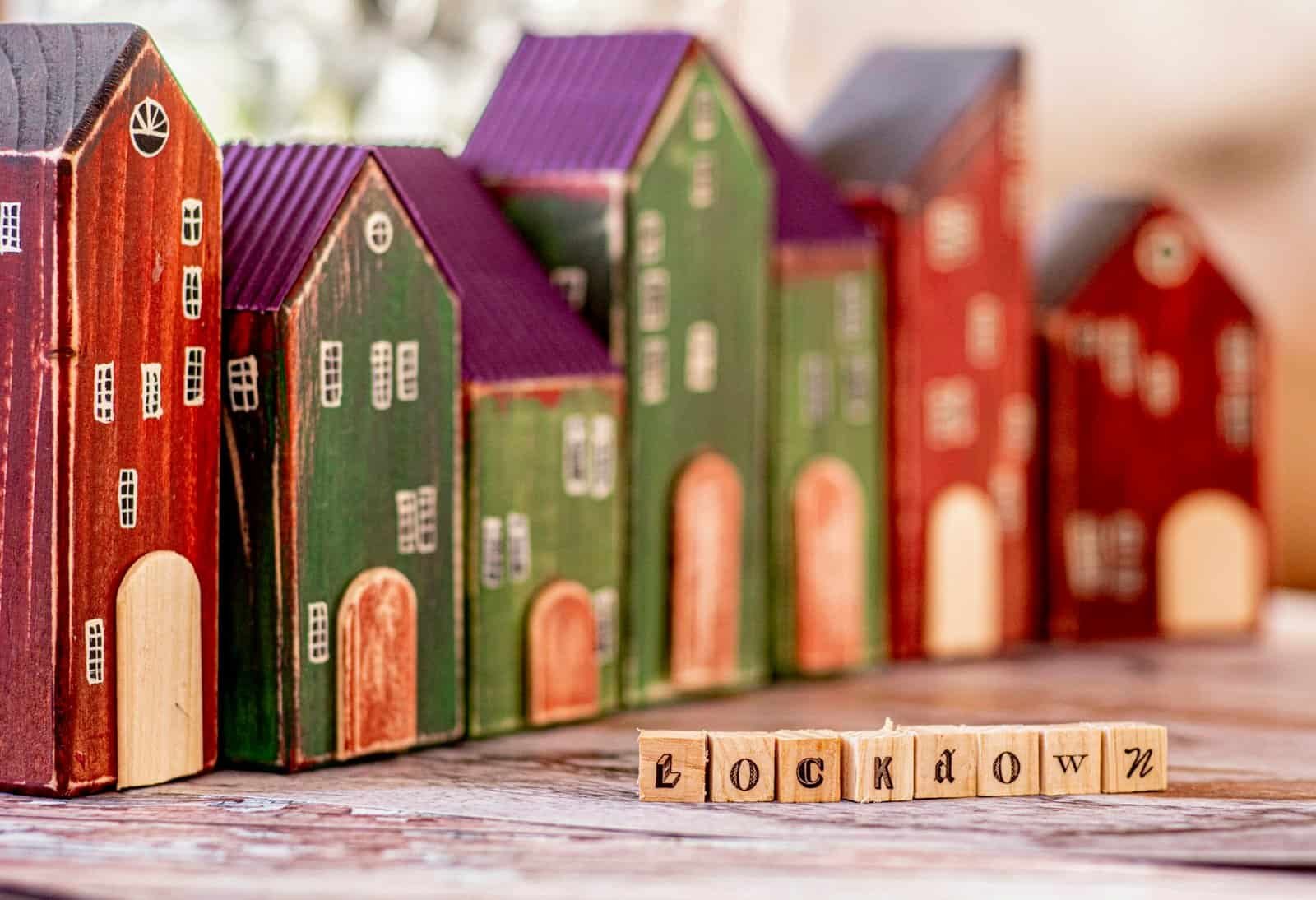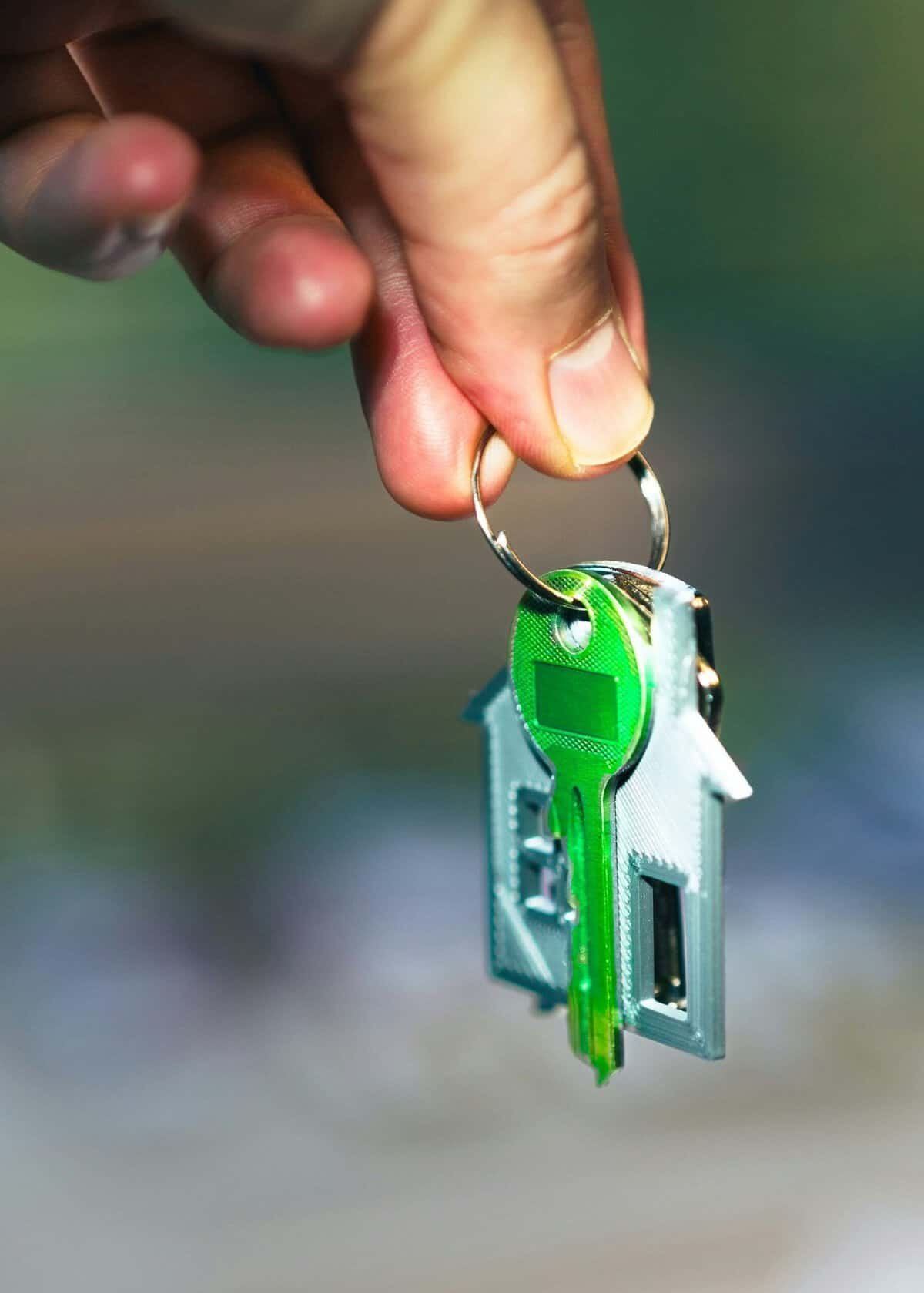Have you wondered how blockchain is reshaping the way property is bought, sold, financed, and managed?
How Is Blockchain Adoption Growing In Real Estate?
You’re looking at a sector that’s traditionally been slow to change — full of paperwork, intermediaries, and legacy systems. Blockchain introduces a new way to record, verify, and transfer ownership and rights, and that potential is prompting pilots, products, and regulatory conversations across the globe. In this article you’ll get a clear, practical view of how adoption is growing, why it matters to different stakeholders, what real-world applications are working today, and what barriers still remain.
What is blockchain and why should you care in real estate?
Blockchain is a distributed ledger technology that records transactions across a network of computers in a way that is tamper-evident and, depending on design, highly transparent. For real estate you benefit from immutable records, programmable transactions (smart contracts), tokenized assets, and the ability to reduce intermediaries. If you’re a buyer, seller, investor, broker, lender, or regulator, these capabilities can change costs, speed, trust, and access.
Key blockchain attributes that matter to real estate
You should focus on the features that directly impact property workflows: immutability (reduced fraud), transparency (clear audit trails), programmability (automated conditions), and divisibility (fractional ownership). Those attributes open new business models and can reduce friction in transactions.

Major use cases transforming real estate
You’ll see blockchain being applied in specific, practical ways. Below is a summary table to help you quickly grasp the main use cases and what each delivers.
| Use Case | What it does | Why it matters to you |
|---|---|---|
| Title and land registry | Records property ownership and title history on a tamper-evident ledger | Reduces title fraud, simplifies verification, can cut search and insurance costs |
| Tokenization | Converts property or interests into digital tokens that can be traded | Enables fractional ownership, liquidity, lower entry points for investors |
| Smart contracts & automated closings | Executes sale conditions, escrows, and payments programmatically | Speeds settlements, cuts intermediaries, reduces human error |
| Mortgage & lending | Uses blockchain records for collateral, automates payments and loan conditions | Improves transparency, speeds underwriting, supports secondary markets |
| Leasing & property management | Tracks leases, payments, maintenance records and access rights on-chain | Improves tenant-landlord visibility and auditability |
| Identity and KYC/AML | Verifies participants with secure digital identities | Simplifies compliance, speeds onboarding |
| Secondary markets & trading platforms | Facilitates trading of tokenized property interests | Creates liquidity and price discovery for illiquid assets |
| Construction and supply chain | Records materials, certifications, and contractor histories | Improves provenance and reduces disputes in construction projects |
Title & land registries: trust in the recorded record
You’ll find governments and private companies experimenting with blockchain to secure land records. When the ledger becomes the authoritative or reconciled source of truth, you reduce fraud and speed searches. Some jurisdictions have piloted blockchain-based registries; others are integrating blockchain proofs alongside existing systems. The trend is toward hybrid models where blockchain augments, rather than outright replaces, official records in the near term.
Tokenization: fractional ownership and new investor pools
Tokenization converts ownership rights into digital tokens that can be traded on a blockchain. You can buy a fraction of a building, receive rental income proportional to your tokens, and trade those tokens on secondary platforms. This lowers barriers for small investors and can attract global capital by enabling faster, more efficient transfers of economic rights.
Smart contracts: automating closings and escrows
Smart contracts let you encode sale terms, mortgage conditions, or lease rules in code that executes when conditions are met. That can replace manual escrow processes, trigger automatic transfers on payment, or enforce rental agreements. Smart contracts reduce delays, lower legal friction, and create transparent execution paths, but they require careful legal validation.
Mortgage, lending, and DeFi integration
You can use on-chain records and tokenized assets as collateral for loans, including DeFi lending platforms. If you’re a lender, chain-based proof of title and tokenized collateral can speed lending, support fractional lending, and enable novel securitization models. However, regulatory and custody challenges remain.
Property management and maintenance records
Storing leases, maintenance logs, inspection reports, and warranties on a blockchain creates an auditable history for a property. You’ll find this useful for due diligence, dispute resolution, and ensuring compliance with contractual maintenance obligations.
How adoption is progressing globally
Adoption is not uniform. Some countries and cities are advancing quickly with regulatory support and pilot programs, others are cautiously watching. You can think of adoption across three broad stages: experimentation (pilots), localized production (platforms in use for specific functions), and scaled integration (widespread legal, operational, and market adoption).
Early adopters and pilot projects
Several governments and private consortia launched pilots in the late 2010s and early 2020s to test land registries, cross-border transactions, and tokenized offerings. Those pilots demonstrated feasibility, highlighted legal gaps, and produced valuable lessons about integration with existing registries and financial systems.
Production platforms and tokenized offerings
You’ll see platforms and companies offering tokenized property interests, especially in developed markets where investor demand and digital infrastructure exist. Some projects focus on single assets (e.g., commercial buildings), while others offer diversified portfolios of tokenized properties. Secondary trading venues have also appeared, creating liquidity for some tokenized real estate.
Regulatory engagement and frameworks
Wider adoption needs clear legal frameworks. Regulators in several jurisdictions are either issuing guidelines, creating sandbox environments, or drafting laws to recognize tokenized assets and digital records. You should watch your local regulator’s workstreams closely, because legal recognition is a major adoption driver.

Benefits you’ll likely see from blockchain in real estate
Blockchain adoption in real estate promises measurable improvements across several dimensions. These benefits explain why multiple stakeholders are piloting or implementing solutions.
Increased speed and lower costs
You’ll save time on title searches, reconciliations, and manual document handling. Digital processes and automated settlement can shorten closing cycles and reduce administrative costs.
Greater transparency and trust
Transparent, auditable transaction histories reduce counterparty risk and disputes. You’ll find it easier to verify provenance and ownership, which builds market confidence.
New liquidity and investor access
Fractional ownership opens your market to a broader investor base and creates secondary markets for interests that were previously illiquid. Investors can enter and exit positions faster, and developers can access new funding sources.
Reduced fraud and improved security
Immutable ledgers and cryptographic verification reduce title fraud, identity theft, and tampering. While no system is immune, blockchain raises the bar for bad actors.
Programmable finance and composability
Smart contracts allow you to automate complex financial flows — for example, automatically distributing rental income to token holders. Integration with other digital financial systems can create composable products (e.g., tokenized real estate used as collateral in broader financial ecosystems).
Challenges and barriers that you should consider
Adoption is growing, but significant challenges remain. You’ll need to understand these if you plan to implement or invest.
Legal recognition and regulatory uncertainty
Most jurisdictions have not yet fully defined the legal status of tokenized property or on-chain titles. You should expect to work with regulators and legal counsel to ensure compliance and to consider hybrid models that link on-chain records to recognized legal instruments.
Interoperability and technical fragmentation
There are many blockchains and platforms, both public and permissioned. You’ll face interoperability issues, and choosing the wrong technology can lead to vendor lock-in. You should evaluate standards and partner ecosystems.
Scalability and transaction costs
Public blockchains can face performance constraints and volatile fees. Some solutions use permissioned chains, sidechains, or layer-2 protocols to improve throughput and predictability. Evaluate trade-offs between decentralization and performance.
Privacy and data protection
Real estate transactions often involve sensitive personal and financial data. Blockchains are transparent by design, so you’ll need privacy layers, permissioned access controls, off-chain storage for sensitive documents, and compliance with laws such as GDPR.
Custody, keys, and operational risk
Digital assets require secure custody solutions. You’ll need robust key management, recovery mechanisms, and integration with existing escrow and title insurance services to manage operational risk.
Market adoption and liquidity risk
Tokenized assets will only be liquid if there’s sufficient market depth and regulatory clarity. You should be cautious about assuming immediate liquidity; early markets can be thin.

How different stakeholders are responding
Adoption is not just technological — it’s organizational. Different stakeholders are testing or implementing blockchain solutions in ways that affect your role in the market.
Buyers and investors
You’ll see buyers and investors attracted by fractional ownership, lower fees, and new opportunities to diversify. Institutional investors are starting to pilot tokenized real estate for portfolio diversification, while retail investors gain access to assets previously out of reach.
Sellers and developers
As a seller or developer, you can access new capital sources, create more flexible ownership structures, and offer liquidity to early investors. You’ll need to adapt sales processes and legal documentation to accommodate tokenization and on-chain settlement.
Brokers and agents
Brokers are experimenting with smart contracts for commission payments, digital listings linked to on-chain proofs, and streamlined KYC onboarding. You’ll need new skills around digital assets and platform integration.
Lenders and servicers
Lenders can use on-chain records for faster collateral verification and may be able to automate servicing functions. You’ll need to manage custody, valuation, and regulatory compliance for tokenized collateral.
Governments and registries
Public entities are piloting blockchain for secure land records, faster conveyances, and fraud prevention. You should expect a phased approach where on-chain proofs complement official records until full legal redesigns occur.
Examples and case studies you should know about
There are multiple pilots and production projects that demonstrate how blockchain works in real estate. Here are illustrative examples and the lessons they offer.
| Project/Example | What it did | Key takeaway for you |
|---|---|---|
| Tokenized rental properties (platforms offering fractional RE ownership) | Issued digital tokens representing rent-producing properties, distributed income via smart contracts | Tokenization works technically and creates new investor access, but liquidity depends on secondary markets |
| Government land registry pilots (various countries) | Experimented with storing hashes or proofs on-chain to secure title records | Storing proofs on-chain can improve tamper-evidence with limited legal disruption |
| Cross-border property sale platforms | Used blockchain to record offers, agreements, and some payments | Blockchain can simplify cross-border paperwork, but currency, legal jurisdiction, and tax issues remain complex |
| Institutional tokenization pilots | Securitized commercial real estate and issued tokens to investors | Institutional players test tokenization mainly to improve operational efficiency and open new investor classes |
Note: You should validate specific platform claims and regulatory status for any project you consider, because the space evolves quickly.

Practical steps for implementing blockchain in your real estate operations
If you’re considering adoption, follow a phased, risk-managed approach. Below is a practical implementation checklist you can use.
1. Define the problem, not the technology
Start by identifying the process that needs improvement: slow closings, title fraud, limited access to capital, or expensive servicing. Match blockchain to the problem only if it offers clear advantages.
2. Assess legal and regulatory constraints
Engage legal counsel and regulators early. Determine whether on-chain records will be recognized, what disclosures you must provide, and how KYC/AML rules apply.
3. Choose the right blockchain architecture
Decide between public, permissioned, or hybrid solutions. Public chains offer openness and liquidity, permissioned chains offer privacy and control. Consider transaction throughput, fees, and developer ecosystem.
| Architecture | Pros | Cons |
|---|---|---|
| Public (e.g., Ethereum) | Liquidity, large developer community, composability | Variable fees, public visibility, scalability issues |
| Permissioned (private consortia) | Privacy controls, predictable performance | Less decentralization, potential vendor lock-in |
| Hybrid | Flexibility to store proofs on public chain while keeping private data off-chain | Increased complexity in integration |
4. Design secure custody and identity frameworks
Implement strong key management, custodian services, and digital identity solutions. Consider using verifiable credentials and privacy-preserving identity providers.
5. Use smart contracts carefully
Code contracts with formal audits and legal alignment. Ensure you have mechanisms for dispute resolution and off-chain governance to handle unforeseen scenarios.
6. Integrate with legacy systems
You’ll need middleware that synchronizes on-chain records with traditional property registries, banking systems, and enterprise resource planning (ERP) tools.
7. Pilot, measure, and scale
Start with a small, well-defined pilot. Measure speed, cost, user satisfaction, legal compliance, and security. Use results to iterate before broader rollout.
Best practices and governance considerations
Good governance helps you avoid pitfalls and ensures long-term viability. Here are practical best practices you should follow.
- Co-design governance with stakeholders: involve registries, legal counsel, investors, and service providers.
- Maintain an auditable compliance trail: ensure off-chain documents are linked to on-chain proofs.
- Plan for upgrades and interoperability: choose modular architectures that allow protocol upgrades and cross-chain compatibility.
- Bake in privacy and data minimization: store sensitive personal data off-chain and only anchor proofs or hashes on-chain.
- Include dispute resolution and fallback processes: smart contracts should not eliminate the need for legal recourse or human oversight.

Metrics to track adoption and success
When you pilot or adopt blockchain solutions, track metrics that show real value.
- Time to close (days) vs. baseline
- Transaction costs / fees saved
- Number of titles or records secured on-chain
- Volume and value of tokenized assets
- Active users and market depth on secondary platforms
- Compliance incidents or fraud cases prevented
- Platform uptime and transaction throughput
Tracking these metrics will help you prove ROI and make the case for further investment.
The role of standards and interoperability
Standards will accelerate adoption by making tokenized assets and identity solutions portable between platforms. You should follow or contribute to industry initiatives that define token standards, data schemas, and KYC/AML interoperability. Standards reduce vendor lock-in and support secondary market growth.
Future trends you should watch
The real estate landscape will continue to evolve as technologies and regulations mature. Here are trends likely to shape adoption in the coming years.
- Expansion of tokenized real estate markets and more robust secondary trading venues
- Greater regulatory clarity that recognizes tokenized ownership and custodial frameworks
- Convergence with DeFi, enabling new lending and securitization models for real estate
- Integration of IoT and digital twins with property ledgers for automated maintenance and insurance
- Use of stablecoins or digital currencies for faster settlement of property transactions
- More public-private partnerships to modernize land registries and reduce fraud
Risks and ethical considerations you should manage
Blockchain can introduce new risks and inequities if not implemented responsibly. You should manage:
- Financialization concerns: tokenization could speed up speculative flows and concentrate benefits among tech-savvy investors unless you build inclusive access.
- Privacy risks: ensure that public ledgers do not unintentionally expose personal data or sensitive transaction details.
- Digital divide: smaller developers, agents, or communities might lack resources to participate, widening gaps.
- Governance capture: be wary of centralized control under the guise of decentralization; ensure fair governance practices.
Checklist for buyers, sellers, and investors
Here’s a short checklist tailored for your role to help you evaluate blockchain-based real estate offerings.
For buyers/investors:
- Verify legal recognition of tokens and on-chain records
- Confirm custody arrangements and token transfer mechanics
- Understand secondary market liquidity and exit options
- Review KYC/AML processes and tax treatment
For sellers/developers:
- Ensure tokenization complies with securities law
- Choose partners with proven technical and legal capabilities
- Define investor rights, distributions, and reporting clearly
- Plan for investor onboarding and ongoing communications
For brokers/agents:
- Understand how smart contracts affect commission models
- Update contracts and disclosures to reflect digital assets
- Acquire skills to advise clients on tokenized offerings
For lenders:
- Validate on-chain collateral verification and valuation processes
- Ensure custody and foreclosure procedures are legally enforceable
- Align servicing platforms with regulatory reporting requirements
Final thoughts: how you can get started
If you’re ready to act, start small and focus on concrete problems. Run a pilot with a clearly defined objective, measurable KPIs, and legal support. Work with reputable technology partners and regulators, and keep stakeholder governance front and center. The technology is moving from novelty to practical tooling, but real-world adoption requires careful legal, operational, and ethical design.
If you approach adoption thoughtfully, you’ll be better positioned to capture the efficiency gains, new markets, and trust-enhancing benefits that blockchain can bring to real estate — while avoiding the common pitfalls that slow broader uptake.
